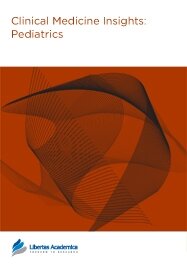

Publication Date: 02 Jul 2008
Journal: Clinical Medicine Insights: Pediatrics

Agharkar Research Institute, Pune, India.
Abstract
Background: In view of the increasing prevalence of obesity in children, it is necessary to investigate the relative performance of different indicators used for its assessment and health consequences.
Objectives: To examine concordance between various indicators used for assessing obesity among adolescents and to examine their ability to predict risk of high systolic blood pressure.
Design: Cross-sectional study, from two schools catering to affluent class.
Subjects: Children in age 9–16 yr (n = 1146 boys and 1036 girls).
Measurements: Body weight, height, skinfold thickness at triceps (TSFT) and body fat percent by trained investigators and blood pressure measurement by a pediatrician using sphygmomanometer.
Results: Prevalence of overweight was lowest with criterion of TSFT (11.7% in boys; 7.6% in girls) and was highest using criterion of body fat percent (53.7% in boys and 28.4% in girls). Body mass index (BMI) had high significant correlation with each of the indicator and with systolic blood pressure (SBP) as well, in both sexes. All the indicators with conventional cut offs showed poor sensitivity for predicting high SBP. However, receiver operating characteristics (ROC) cut-offs improved sensitivity considerably, but the values were much lower compared to conventional cut-offs.
Conclusions: There is considerable disparity in the estimates of overweight children obtained by different indicators. Lower values of ROC cut-offs highlights the need for population specific customized classification systems for assessing obesity in view of the probable population differences in relative risks of non-communicable adult diseases.
PDF (304.02 KB PDF FORMAT)
RIS citation (ENDNOTE, REFERENCE MANAGER, PROCITE, REFWORKS)
BibTex citation (BIBDESK, LATEX)
It has been a great pleasure to be a peer reviewer for Clinical Medicine Reviews in Vascular Health. The Aims & Scope of the journal ensures a clearly defined focus. The editorial process is highly efficient. The quality of the manuscripts I have been reviewing is generally exceptional.

All authors are surveyed after their articles are published. Authors are asked to rate their experience in a variety of areas, and their responses help us to monitor our performance. Presented here are their responses in some key areas. No 'poor' or 'very poor' responses were received; these are represented in the 'other' category.See Our Results
Copyright © 2013 Libertas Academica Ltd (except open access articles and accompanying metadata and supplementary files.)
FacebookGoogle+Twitter
PinterestTumblrYouTube